Managing the Growth of India’s Metro Rail System: Streamlined Planning for Punctual Execution
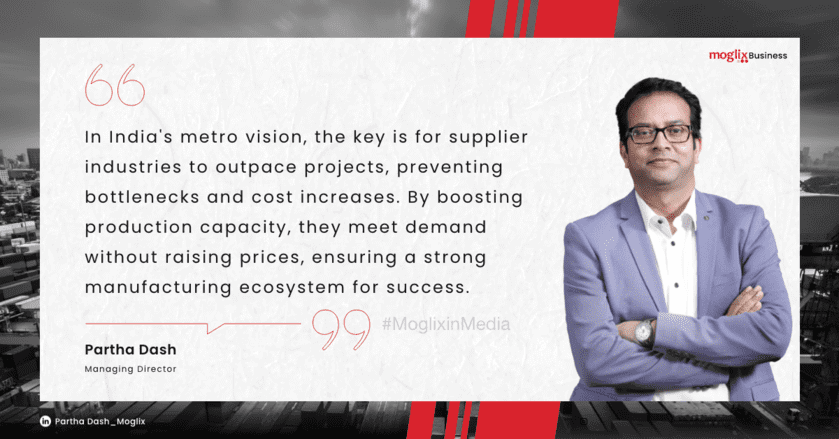
Managing the Growth of India’s Metro Rail System: Streamlined Planning for Punctual Execution
Envision traversing your city effortlessly, above the gridlock. This isn’t fiction—it’s India’s urban future. By 2030, a 1000km metro rail network is planned across nine major cities, revolutionizing daily commutes. Yet, how does India ensure this vision becomes reality on time and within budget? By strategically uniting government efforts and industry collaboration, hurdles can be overcome, paving the way for a more connected, sustainable urban landscape.
Read MoreGuiding MSMEs Toward A New Era of Innovation
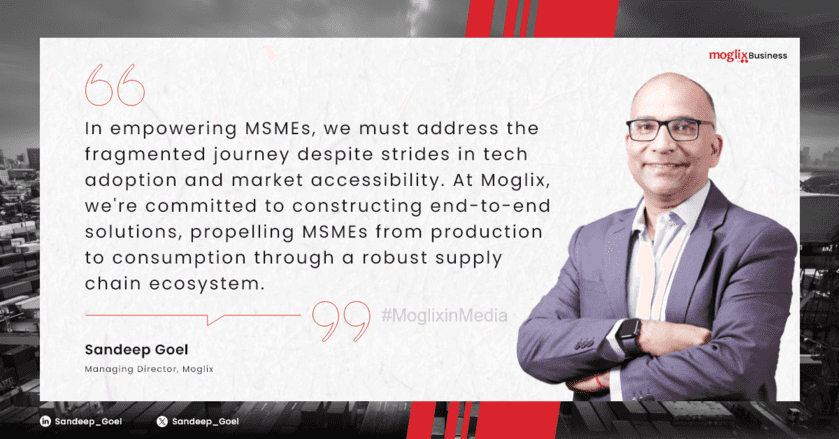
Guiding MSMEs Toward A New Era of Innovation
As India’s economy rebounds and business confidence grows, focus remains on MSMEs, which contribute significantly to GDP and exports. Despite pandemic challenges, many are bouncing back, while innovative startups emerge, adding dynamism to the business landscape.
Read MoreSustainable Strategies for B2B E-commerce Success
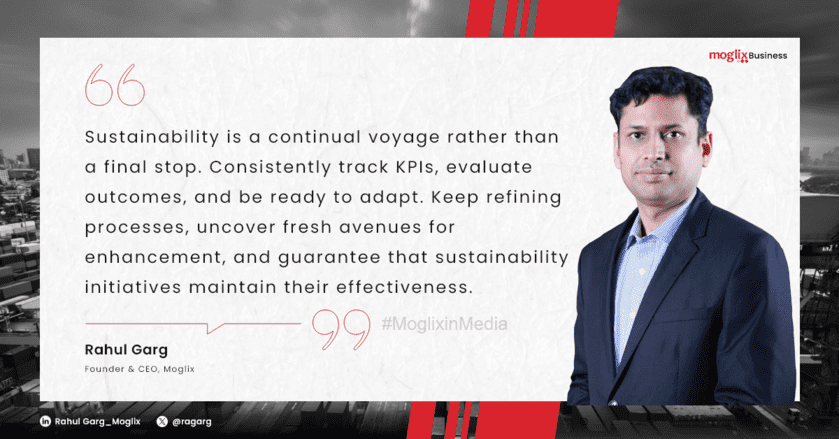
Sustainable Strategies for B2B E-commerce Success
E-procurement, a nearly $1 trillion annual e-commerce market, is witnessing a growing portion dedicated to sustainable procurement. This underscores the shift where embedding sustainability into the essence of a B2B e-commerce startup isn’t merely altruistic; it’s a strategic move yielding tangible advantages. It bolsters brand reputation, nurtures customer loyalty, and appeals to investors prioritizing ESG considerations. Yet, to achieve this, B2B e-commerce startups must lay the groundwork for sustainability within their organizational structure.
A CPO’s Guide to Indirect Spend Management
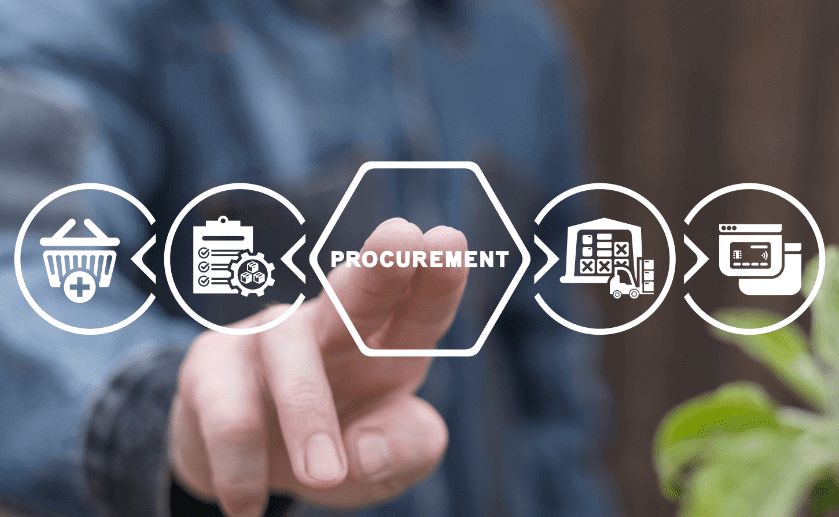
A CPO’s Guide to Indirect Spend Management
Did you know that indirect spend can devour a whopping 20% to 40% of a company’s overall financial budget? This highlights the importance of effective indirect spend management. For CPOs all over the world, spend optimization is a constant pursuit. While direct procurement often receives the maximum attention, indirect procurement should also be aware of the eagle’s eye. This blog will guide CPOs on indirect spend management by showing its impact on procurement strategy. Get ready for actionable insights and best practices to change your approach to indirect spend.
Understanding Indirect Spend
Indirect spend, or indirect procurement, refers to all indirect expenses in producing goods or services. This could include office supplies, marketing expenses, travel, utilities, professional services, and IT infrastructure. Unlike direct procurement, with fewer suppliers and high-value contracts, indirect procurement involves a more extensive, more fragmented supplier base with lower individual purchase values.
Importance of Indirect Spend Management
Cost Savings Potential: By optimizing indirect procurement, companies can reduce their costs by up to 25%.
Improved Visibility and Control: Due to its decentralized nature, indirect spending can go beyond control. Its effective management enhances visibility across the entire supply chain.
Enhanced Risk Management: A diversified supplier base can help you avoid the risk associated with sole dependency, as in direct procurement. Intel is the best example of a company that spends $300 million annually with diverse suppliers.
Challenges Faced by CPOs in Indirect Procurement
Let’s look at the challenges that indirect spend presents for CPOs.
Visibility and Data Accuracy: Due to the decentralized nature of indirect spend, CPOs need help to achieve complete visibility and maintain data accuracy across their supply chain.
Supplier Management: Indirect procurement involves a large and diverse supplier base. That makes it even more challenging for CPOs to build strong relationships, monitor performance, and negotiate effectively with each supplier.
Stakeholder Buy-In: Businesses need help monitoring stakeholder buy-in across various departments with the authority for indirect purchases. Unless you have implemented solid policies and procedures, it isn’t easy to streamline the process.
Limited Resources: Most businesses need a dedicated team to manage indirect spending. Also, they lack technology knowledge and do not know how to use automation to streamline processes. In that case, managing the indirect spend across the entire supply chain even gets more challenging.
Best Practices for Optimizing Indirect Spend Management
Here are some key strategies that CPOs can leverage to optimize indirect spend management:
Leveraging Technology: Nowadays, nearly 15%-40% of organizations are automating procurement through technologies for direct and indirect procurement cost savings. Using an ideal procurement software powered by AI and ML can automate tasks, centralize data collection, aid in spend analysis, and streamline approvals.
Category Management: CPOs can also group similar indirect spend categories and develop a strategic approach for each, according to a study by McKinsey & Company. This will help CPOs to quickly focus on negotiation, supplier consolidation, and volume discounts. You can also refer to this case study to learn how the e-catalog solution from Moglix has helped India’s second-largest tractor manufacturer save 85% of staff hours on procurement.
Vendor Management: Imagine working with a limited number of suppliers to manage your indirect expenses easily. Almost 70% of organizations are considering vendor consolidation by 2025 to negotiate favorable contracts, establish clear performance metrics, and identify cost-saving opportunities.
Spend Data Analysis: Big IT giants like Infosys are leveraging spend data analysis from both direct and indirect procurement to identify patterns, uncover savings opportunities, and inform category management strategies.
Are you looking for an ideal procurement software solution to manage your indirect procurement for substantial cost savings?
Partner with Moglix Solutions! Visit our website to learn more.
Know When to Replace Industrial PPE
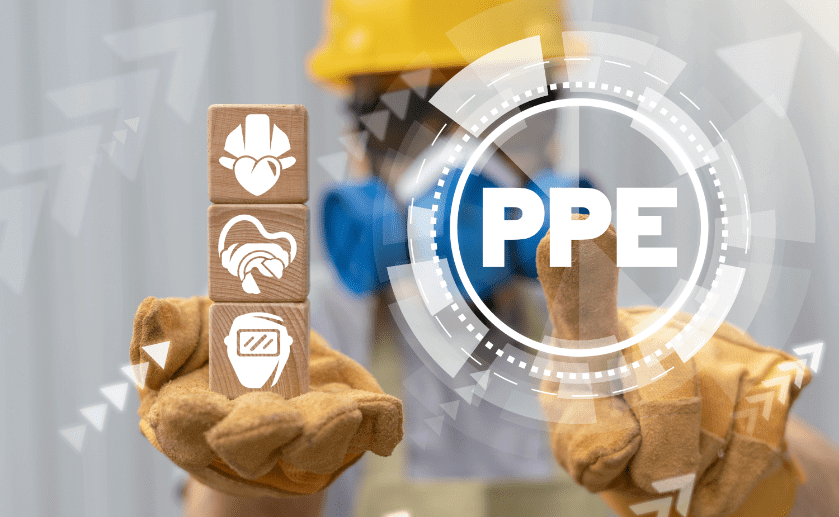
Know When to Replace Industrial PPE
Introduction
Would you like to change the safety precautions at your workplace with a single, easy fix? Introduce appropriate PPE usage to reduce illnesses and injuries by 37.6%! Pay attention to OSHA’s warning: between 12% and 14% of disability injuries are caused by PPE negligence. Remember that PPE lifespan is important; for a healthy workforce, safety and longevity should come first.
Safety officers must remember that PPE effectiveness fades with wear and inadequate maintenance across industries like healthcare and construction.
This blog will discuss the decommissioning and replacement of the PPE.
The Importance of Expiry Dates in Industrial PPE for Safety Officers
Awareness of expiration dates for personal protective equipment (PPE) within the industrial sector is crucial for safety officers. These dates are key to ensuring that the gear can protect workers against hazards. Due to material degradation, the protective qualities of PPE diminish over time, highlighting the importance of routine expiry date checks to uphold safety standards.
Understanding PPE Lifespan: A Safety Officer’s Guide
The findings from a University of Toronto study highlight the importance of vigilant PPE monitoring. In this study, 60% of tested expired N95 respirators from 11 different models failed to achieve the required 95% filtration efficiency, with failure rates increasing alongside the respirators’ age. This example underscores the critical nature of recognizing when all forms of Personal Protective Equipment (PPE) have reached the end of their effective service life.
For safety officers, it is paramount to identify the signs indicating that PPE, regardless of type, is no longer fit for purpose. Several indicators can help determine when PPE should be retired:
- Material Degradation: Look for signs of wear, such as fading colors in masks and gloves, which can indicate a loss of material integrity.
- Loss of Fit and Functionality: PPE that no longer fits properly, such as stretched-out ear loops on masks or gloves that don’t snugly fit, should be replaced.
- Visible Damage: Any visible damage, including tears, holes, or compromised structural integrity, signifies that the PPE cannot offer the required level of protection and must be disposed of.
Pro Tip: It’s prudent to be proactive and develop a line of action toward end-of-life industrial safety equipment. One can stay updated with the latest advancements and the best quality safety equipment available in the market.
Final Words:
The safety officers are responsible for ensuring regular PPE inspections and timely replacements, maintaining a safe workplace. Recognizing the end of PPE’s service life is crucial in this process. For those looking to source the highest quality safety gear for these replacements, we recommend exploring your options through trusted suppliers. Learn more about procuring top-quality safety equipment at competitive prices with Moglix, ensuring your safety measures are always up-to-date and effective.
Key Factors to Consider When Selecting High-Pressure Valves

Key Factors to Consider When Selecting High-Pressure Valves
Ever wonder how precise fluid flow management occurs at the core of industrial safety? Particularly in high-pressure situations, valves hold the solution. However, how do you deal with the difficulties of choosing the appropriate valve to guarantee efficiency and safety? You must look for pressure ratings, materials type, valve types, efficiency, and process integrity. This article will touch upon these essential factors to help you learn how to choose high-pressure industrial valves that ensure optimal performance without inviting potential risks.
Different Factors to Consider in High-Pressure Valves
1. Pressure Rating
You must know the ideal pressure the valve needs for a specific application to make the correct selection. High-pressure valves are rated in pounds per square inch (psi) or bar. The value indicates the maximum pressure the valve can withstand safely.
If you underestimate the pressure and the valve is exposed to more pressure than its maximum rating, it can lead to catastrophic failures. Valve failure may cause severe damage, injury, and environmental hazards.
Besides the application pressure requirement, you must consider additional factors like pressure surges that might occur during system operation to determine the pressure rating and choose the valve accordingly.
2. Material Compatibility
High-pressure valves are used to control the fluid pressure. In this regard, the valve material should be compatible with the fluids it will handle. Without chemical compatibility, the fluid may corrode or degrade the valve body and internal components with constant exposure.
Generally, experts consider factors like acidity, alkalinity, and corrosive elements in the fluid to determine the ideal material type for the valve body and o-rings.
High-pressure valves are usually made of forged steel and stainless steel. For extreme environments, such as marine conditions, high-pressure valves are made of bronze.
3. Valve Type
Here is a quick guide to help you understand different types of high-pressure valves and their function within the system.
- Gate valves: Ideal for complete opening or closing the flow to offer minimal pressure drop
- Globe valves: Well-suited for throttling applications to attain precise flow regulation through a screw mechanism
- Ball valves: Provide quick on/off operation with a rotating ball element, suitable for various pressures and fluids
- Check valves: Allow one-way flow to prevent backward flow of the fluid in the system
- Pressure relief valves: Protect the system by automatically releasing excess pressure that exceeds the preset limit
4. Performance Requirements
- Beyond the basic function, several performance factors must be considered during valve selection. Here are some important ones:
- Flow rate: The valve should be able to handle the set volume of fluid without any hassle
- Cycle life: represents the frequency of operation (opening/closing cycles) and directly influences valve durability
- Leakage rate: valves with minimal leakage rate are ideal for critical applications
- Temperature: the valve material should be able to withstand the operating temperature range of the fluid
5. Additional Considerations
If you are operating valves in harsh environments like extreme temperatures, high humidity, or dust, consider valves with weatherproofing or special coatings.
Also, as per safety rules in the industry, high-pressure valves must undergo periodic maintenance. However, while performing maintenance, workers must be equipped with the necessary safety tools and equipment as per the requirements of industrial work safety.
Looking for a qualified high-pressure valve manufacturer and safety equipment supplier?
Partner with Moglix Solutions! Visit our website to learn more.
Navigating the Impact of Volatile Markets on MRO Procurement

Navigating the Impact of Volatile Markets on MRO Procurement
Introduction
Imagine a raw material shortage halting your production, sending ripples through your entire supply chain. This is the reality for MRO procurement in volatile markets. Organizations must be agile enough to evolve and meet their targets in the current volatile economy. Volatile markets introduce additional challenges to even the most well-oiled procurement processes. In light of these difficulties, let’s examine MRO procurement’s obstacles in erratic markets and present workable solutions.
Challenges of MRO Procurement in Volatile Markets
Now, let’s get down to business: the difficulties associated with MRO procurement in volatile markets.
Rising Prices:
Imagine if prices are rising one day and falling the next. Why? Put it down to the erratic political landscape and those annoying trade barriers. All of a sudden, the materials, tools, and pieces you need are quite expensive. For instance, in the recent past, the global steel price surged by 20% due to supply chain disruptions in the procurement of coking coal caused by the pandemic and the ongoing Ukraine war. In such a scenario, unexpected expenses can harm operational costs when budgeting becomes a challenge .
Supply Chain Disruptions:
Nearly 49% of the companies surveyed last year experienced supply chain disruptions followed by shortages of critical MRO items. Such global disruptions can impact the flow of goods across borders. Unless the company has a diversified supplier base and contingency plan, delays and shortages of critical MRO items can lead to production halts and maintenance backlogs.
Lack of Focus:
Most organizations focus on short-term gains and cost reduction rather than value creation. For instance, around 85% of companies feel a high demand for sustainable procurement. The shocking part is that just 46% of people have actually fully embraced these important behaviors. It’s like not wanting to follow the X markings on a treasure map! Investors are considering such nonfinancial factors to identify risks and growth opportunities. Unless the company has a dedicated team to focus on key driving factors that bring value to your procurement practices, staying afloat in the volatile market is impossible .
Mitigating the Impact: Strategies for Effective MRO Procurement
Are you familiar with the lean procurement model? Moglix vouches for it! They gave it to one of the best OEMs for power management systems, and guess what? It has revolutionized cost reductions throughout these wild fluctuations in the market. There’s more, though! See these additional clever approaches for creating a fantastic MRO procurement model.
Diversify Your Supplier Base:
Around 48% of companies are already considering adopting a diversified supplier base as one of their major procurement KPIs. They have understood that relying on a single supplier leaves them vulnerable to price fluctuations and potential supply chain disruptions. Search giant Google announced that it will spend around USD 1 billion annually with diverse US suppliers by 2025. Other big companies like Micron Technology, Xcel Energy, and Air Products are also considering diversifying at least 15% of their supplier base to create backup options in case of supply chain issues by 2025.
Build Strong Relationships with Vendors:
As per research by Procurement Leaders, around 47% of the supplier collaborations fail due to lack of trust and commitment. It hampers procurement success. Companies must maintain a robust vendor relationship on multiple levels as it has many benefits. For instance, if you have a good relationship with your vendor, order and quality issues go down, and you can take advantage of fixed pricing for longer.
One of the best ways to achieve a robust vendor relationship is to treat them like business partners. For instance, technology giant Intel is considering spending $300 million annually to partner with suppliers undervalued by society for so long.
Also, keeping your vendors loyal to you with timely invoice clearances is crucial. In this way, you will not be like those companies that lose 20% to 30% of their vendors due to disloyalty in payments.
Embrace eProcurement Technology:
What’s the newest hot thing in the business world? eProcurement applications! Many businesses are hopping on board to simplify their MRO purchase processes. It’s as if you could wave a magic wand and solve every annoying procurement headache. Ideal procurement tools are so beneficial that their global market size is expected to reach USD 8.17 billion in 2024. An ideal procurement software allows you to automate tasks, get real-time data on inventory levels and spending patterns, and facilitate communication with vendors, all from a single dashboard. This prepares CEOs to make faster decisions and improve visibility into their procurement process.
Conclusion
Coming through MRO procurement challenges under a volatile market is challenging for procurement managers. It requires diversifying your supplier base, building strong relationships with vendors, leveraging eProcurement software, and adopting flexible procurement practices. Once you master these strategies, you can meet your MRO needs efficiently and cost-effectively, even when the market throws curveballs your way.
Looking to build robust MRO procurement solutions to stay unhinged from future market fluctuations?
References
- Steel prices jump up to Rs 5,000 per tonne as supply chains hit amid Russia-Ukraine conflict
- Tech and regionalization bolster supply chains, but complacency looms
- Sustainability Statistics 2024 — 75 Key Figures
- Learn How Moglix is Enabling a Leading Power Management Systems OEM to Adopt a Lean Procurement Model
- Supplier Diversity Statistics 2024 – 35 Key Figures
- Google, US bank coalition pledge billions to underserved businesses
- 47% Of Supplier Collaborations Fail: Build Trust Or Expect Failure
- Forecasting Change: Supplier Diversity Trends Shaping 2024
- 30+ Invaluable Customer Loyalty Statistics [2023]: What Makes Customers Come Back?
- Procurement Software Market Size & Share Analysis – Growth Trends & Forecasts (2024 – 2029)
Cost Savings through Contract Optimization: Tips for Procurement Professionals

Cost Savings through Contract Optimization: Tips for Procurement Professionals
Introduction
Did you know that poor contract management cost companies 9% of their annual revenue? In this regard, procurement professionals using manual contract management processes struggle to identify and capitalize on cost-saving opportunities. Fortunately, innovative digital solutions are now available to overcome these challenges through effective contract optimization. Let’s go into procurement management and investigate state-of-the-art tactics that optimize cost savings via simplified procedures.
Innovative Strategies for Cost Saving by Streamlining Procurement Management
Several innovative strategies can help you streamline your procurement processes without much hassle. Consider adopting the following strategies:
Standardize Contract Templates
Take your time to develop standardized templates for commonly used contracts. You can also get standard procurement templates online, as Public Works and Government Services Canada (PWGSC) provides for its contracting officers on their official website. Using such templates can save your productive man hours (cost to company).
Implement a Centralized Contract Repository
In a study conducted by ContractSafe, 90% of contract managers waste their valuable time searching for specific documents. Imagine the time, energy, and resources they can save with a centralized contract repository. For instance, procurement officers can use cloud-based central repositories to store and access all contract files during requirements. It will also provide a clear audit trail and simplify compliance audits to avoid potential fines and legal repercussions.
Focus on Vendor Management
Around 47% of the supplier collaborations can’t stand as their business relationship lacks trust and commitment. That’s where vendor management becomes imperative. If you’re working with multiple vendors, consider vendor consolidation as your ideal bet. Nearly 60% of procurement costs happen because of logistical delays and vendor management helps businesses optimize cash flow with ease.
How does a strong vendor relationship help reduce costs in procurement?
When you maintain a good relationship with your vendor, they prioritize you over other clients to supply raw materials without any quality issues. Additionally, if you have inked a fixed price for a long time based on your strong business relationship, you can easily keep your monthly burn as before despite price fluctuations in the market.
Giant companies like Intel, Google, Micron Technology, Xcel Energy, and Air Products have already announced diversifying their supply chain to build a strong network of vendors to easily absorb future supply chain disruptions .
Digital Tools to Streamline Procurement Management
Collaborative Supplier Relationship Management (SRM) Platforms
Around 48% of organizations have decided to diversify their supplier base to protect their supply chain from volatile market conditions and reduce procurement costs. In this regard, digital SRM tools are highly useful. Such tools provide CEOs with real-time visibility into a diverse range of reliable suppliers to overcome disruption risks and improve decision-making from a unified platform.
Price and Supply Chain Risk Monitoring Tools
What if you can collect and stock raw materials ahead of the supply chain disruption? Around 86% of organizations look forward to leveraging real-time digital transformation of supply chains. The aim is to track past market data and predict stockout to overcome supply chain disruptions with ease. In this regard, you can leverage AI and machine learning to predict price fluctuations and adjust purchase strategies to keep your procurement costs under control amidst future supply chain disruptions.
Predictive Analytics for Spend Management
Will it not save your management a lot of time to get future spending patterns sorted ahead of market volatility? Predictive analytics is one tool that can analyze your historical data through machine learning to predict spending patterns in line with future needs and potential cost fluctuations. This can help your procurement team optimize the budget, secure cost-effective contracts, and make informed decisions before the market condition turns red. Learn more about how Moglix helped an automotive OEM to unlock cost savings in indirect procurement through supplier consolidation.
Leverage Moglix Contract Management Software To Stay Above Market Volatility
Moglix Contract Management software empowers CPOs and CTOs to easily transform their procurement processes, streamline contract lifecycle management, and learn negotiation processes to keep costs under control.
With our contract optimization software, you can:
- Gain real-time insights into evolving market trends
- Connect with top-performing suppliers
- Perform risk assessment through data-driven evaluations
- Take the help of powerful analytics to make strategic decisions
- Leverage AI-driven insights to identify cost-saving opportunities
Looking to streamline your contract lifecycle management to overcome the volatile market every time?
Partner with Moglix Solutions! Visit our website to learn more.
References
- Poor Contract Management Continues To Costs Companies 9% Of Their Bottom Line
- Contract Management Statistics 2024 — 55 Key Figures
- 47% Of Supplier Collaborations Fail: Build Trust Or Expect Failure
- Google, US bank coalition pledge billions to underserved businesses
- Supplier Diversity Statistics 2024 – 35 Key Figures
How Businesses Can Drive Efficiency Through Vendor Consolidation

How Businesses Can Drive Efficiency Through Vendor Consolidation
As per a Gartner review, nearly 65% of the organizations use vendor consolidation to improve risk posture, while 29% to reduce spending on licensing. Vendor consolidation is important to streamline procurement operations and maximize efficiency for sustainable growth. When you reduce the number of vendors, you unlock many benefits, including cost reduction, streamlined procurement, improved visibility, and more. Let’s understand these benefits and learn some of the best vendor consolidation tactics to easily overcome process challenges .
Four Significant Benefits of Vendor Consolidation
Let’s take a look at some of the key benefits of vendor consolidation.
Cost reduction
Where 60% of procurement costs result from logistical delays, vendor consolidation is the best way to optimize your cash flow. For instance, you can place a higher volume of orders at better prices and reduced shipping costs. In a study by CIO Tech Talk Community, 95% of respondents confirmed that they are seriously considering vendor consolidation in the next 12 months, with 69% citing finance-driven cost-cutting as one of the major driving forces.
Streamlined Processes
What if you can save your valuable time and minimize errors through an effective vendor consolidation? Nowadays, well-maintained vendor management systems are also helping CPOs automate routine tasks related to vendor interactions from a centralized platform. For instance, you can provide vendors with secure access to important documents so that you can get relief from administrative burdens.
Improved Visibility and Control
In a recent study, only 6% of the participant companies admitted to having full visibility into their supply chain. When you manage multiple vendors, keeping a tap on the overall spending and performance becomes a challenge. Through consolidation, you can track expenditures and performance KPIs more effectively. For more clarity, you can go through this case study to understand how Moglix helped a leading adhesive manufacturer attain supply chain visibility across 70 plants through vendor consolidation.
Strengthened Supplier Relationship
Several reasons, such as the conflict in Ukraine, the rising cost of oil, and the global economic downturn, have significantly contributed to supplier chain disruptions worldwide. It’s costing companies an average of $184 million per year. Consolidating vendors can help companies foster a stronger collaboration with suppliers to get priority during supply chain disruptions.
Evaluating and selecting vendors for consolidation: a strategic approach
Here are some key steps to perform a thorough evaluation for vendor consolidation.
Vendor assessment
You should use several key factors to do vendor assessment; only pricing structure does not suffice. Look for strengths, weaknesses, and overall performances. For instance, for assessing vendors for office supplies, consider their pros, such as product selection, eco-friendly product line, and reliable delivery, as well as their weak spots, such as customer service and pricing structures. Those who stand tall on all your diverse requirements should be considered for consolidation.
Financial Health
As per the Corporate Finance Institute, four major aspects are highly useful for financial health analysis: income statement, balance sheet, cash flow statement, and rates of return.
You can use various techniques, such as horizontal, vertical, or ratio analysis, to get information about your vendors’ financial performance and position.
Negotiation contracts
Imagine having access to the spending patterns of your vendors to leverage better deals during negotiation. This is one of the best ways to consolidate vendors. Unfortunately, only 5% of organizations use expense data for negotiations with vendors. They feel it’s a tiresome process. However, this is very much possible by using technologies to gather accurate data through an ideal vendor management system.
Are you looking forward to consolidating vendors to reduce costs and achieve great visibility?
Partner with Moglix Solutions! Visit our website to learn more.
References
- https://www.gartner.com/en/newsroom/press-releases/2022-09-12-gartner-survey-shows-seventy-five-percent-of-organizations-are-pursuing-security-vendor-consolidation-in-2022
- https://www.karboncard.com/blog/5-ways-payout-vendor-consolidation
- https://www.cio.com/article/657327/what-it-executives-are-saying-about-vendor-consolidation.html
- https://cashflowinventory.com/blog/supply-chain-statistics/
- https://business.moglix.com/case-studies/moglix-consolidates-the-vendor-base-across-70-plants-for-leading-adhesive-manufacturer?utm_source=website&utm_medium=blog&utm_campaign=How+Businesses+Can+Drive+Efficiency+Through+Vendor+Consolidation
- https://www.statista.com/statistics/1259125/cost-supply-chain-disruption-country/
- https://corporatefinanceinstitute.com/resources/accounting/analysis-of-financial-statements/
- https://www.emburse.com/assets/pdfs/using-your-data-for-negotiations-with-vendors-infographic.pdf
Sustainable Success: The B2B E-commerce Trinity of People, Planet, and Profit
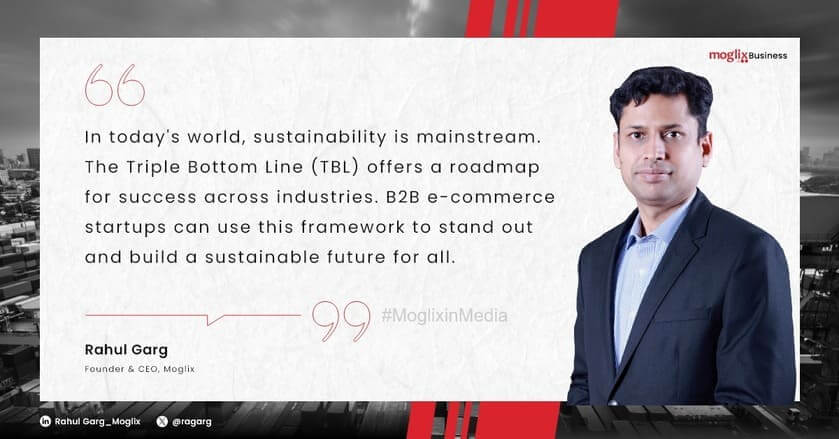
Sustainable Success: The B2B E-commerce Trinity of People, Planet, and Profit
Since the inception of balance sheets, the ‘bottom line’ has served as the ultimate conclusion for businesses—a singular metric, focus, and story. Yet, the narrative is evolving. Today’s businesses are acknowledging the limitations of this singular approach and embracing a more comprehensive one: the Triple Bottom Line (TBL). This framework acknowledges that a company’s success extends beyond financial performance to encompass its impact on both people and the planet. With over 80% of the largest 100 companies adopting this approach, they have witnessed their average annual ROI soar to 13.5%, surpassing the traditional business average of 9.1%.
Read More